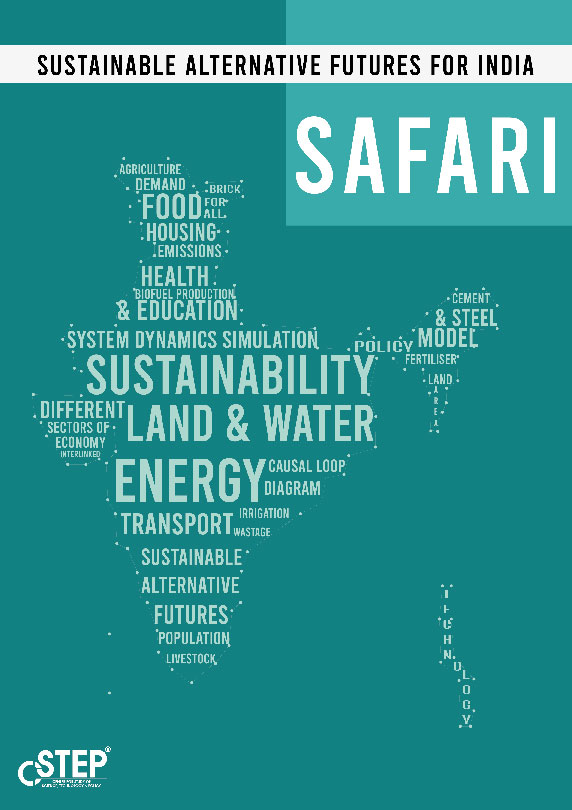Climate change mitigation involves strategies aimed at decreasing greenhouse gas emissions, promoting renewable energy sources, improving energy efficiency, and implementing sustainable practices. CSTEP focuses on building models to simulate India's future across sectors, such as transport, industries, buildings, agriculture, and forestry, to find interventions required to achieve a sustainable and secure future. Our work also involves the study of certain themes that cut across sectors (quality of life and development vs climate action, water and land demands for agriculture vs power, etc).
CSTEP's SAFARI model: Balancing development with climate action requires a good understanding of the interactions between sectors, natural resource systems, and environmental externalities. The Climate Change Mitigation at CSTEP has undertaken a modelling study with the aim to provide such an understanding and help create scenarios for low-carbon development through the use of an interactive simulation tool called Sustainable Alternative Futures for India (SAFARI). You can access the tool here.
SAFARI estimates the energy, emissions, and resources implications of achieving developmental goals such as food, housing, healthcare, education, power for all, and transport up to 2050. The user interface allows you to explore these implications as well as the trade-offs between them. Using SAFARI, you can create integrated scenarios across sectors and test out the impact of policy choices on energy, emissions, and resources. Ultimately, we hope that this tool can be used to provide insights into developing and tracking India's long-term strategy (LTS) in line with the Paris Agreement. For more information, please contact safari@cstep.in



District-Level Changes in Climate: Historical Climate and Climate Change Projections for the Southern States of India
The impacts of climate variability, climate change, and extreme events are visible globally and in India. The Global Climate Risk Index 2021 ranks India seventh, considering the extent to which India has been affected by the impacts of weather-related loss events (storms, floods, heatwaves, etc.). The index signals that repercussions of escalating climate change are exacerbating and can no longer be ignored.
Coal and India Beyond COP26 – Why the Long Phase?
The two-week-long UN Climate Change Conference (COP26) concluded with the negotiated terms detailed in the Glasgow Climate Pact. According to the International Energy Agency (IEA), in the most optimistic scenario where all the announced pledges are achieved, global mean temperature rise can be limited to 1.8°C by 2100. Even if complete implementation may be unlikely, in terms of ambition and ratcheting, COP26 has made progress, albeit incremental.
Comprehensive Air Pollution Impact Estimation Can Help Deal with the ‘Triple Planetary Crises’
“Healthy Air, Healthy Planet” — the theme for this year’s International Day of Clean Air for Blue Skies 2021 — is upfront in acknowledging the ubiquity of air-pollution effects, calling for collective efforts to improve our air for a better tomorrow.
Turn Down the Heat – Coping with Energy Demand and Thermal Comfort
Thermal comfort is a fundamental need and should not be the privilege of the well-off. The recent string of heatwaves around the world, including in India, have unquestionably been intensified by climate change. Staying ‘thermally comfortable’, especially during these events, is vital for avoiding the health impacts of extreme heat.
With the Climate Crisis On, E10 Might Be India’s Ethanol-Blending Sweet Spot
In his Independence Day address to the nation, Prime Minister Narendra Modi mentioned India spends over Rs 12 lakh crore on importing energy, and that domestic energy production will be a policy priority for the country.
Sustainable Alternative Futures for Urban India: the Resource, Energy, and Emissions Implications of Urban Form Scenarios
India’s rapid urbanisation underscores the need to balance growing consumption patterns, development goals, and climate commitments. The scenarios presented in this paper were created using our Sustainable Alternative Futures for India (SAFARI) model, a system dynamics model that simulates interlinkages between sectors in India and their competition for resources and energy at the national scale.